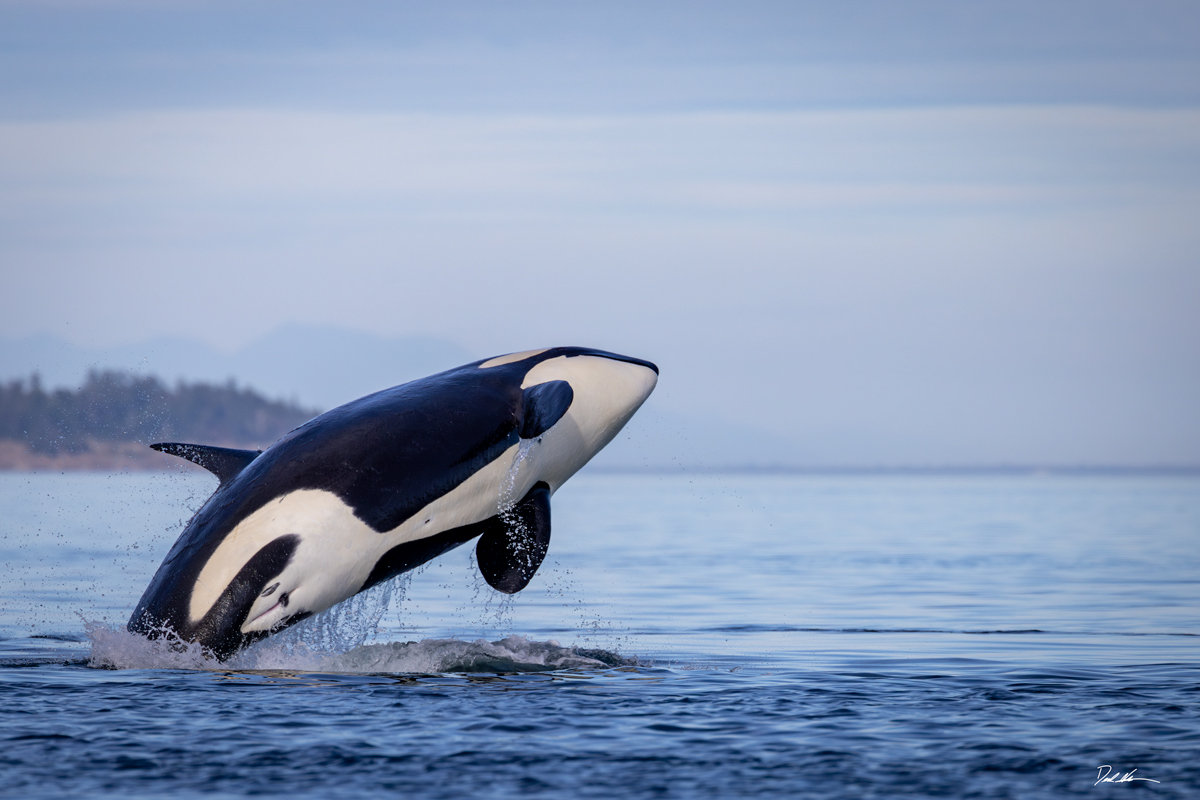
Killer whale photos are wildly hard to get. Little did I know before taking on a project to raise awareness for the Southern Resident killer whales’ fight for survival, but photographing orcas is one of the most challenging wildlife subjects to capture on camera. Unless you are equipped with underwater gear and ready to dive in freezing cold temperatures, you have to join the rest of us searching above water for the shot. I will share with you my tips and tricks as a wildlife photographer for getting the most out of your time with them, but be prepared to be frustrated. It, however, makes getting the perfect shot that much more rewarding when you finally get one.
How to Photograph A Killer Whale
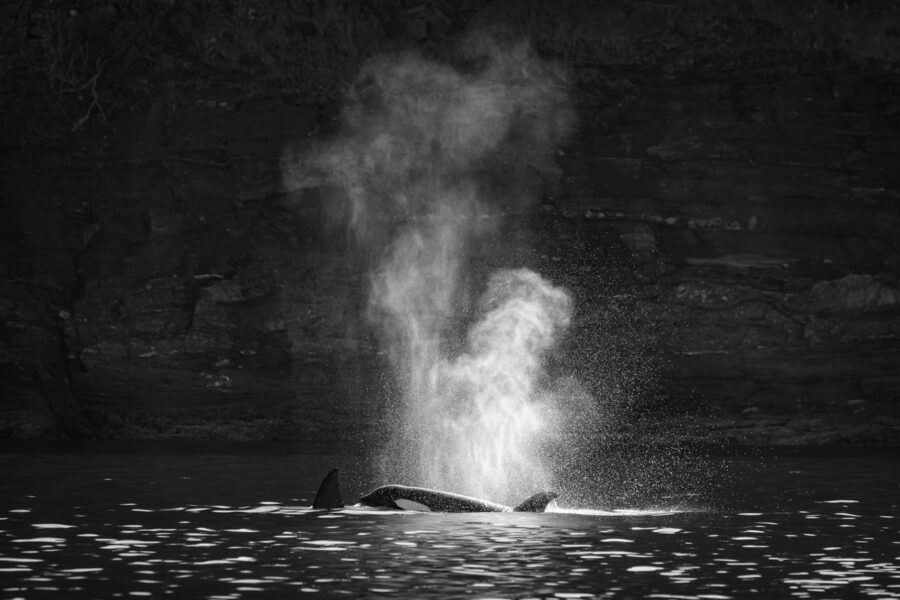
Once you have found them, the real fun begins. Killer whales change direction all the time. They go on deep dives, throwing off your anticipation of where they will be at the surface next. Oh yeah, you’re most likely in a rocking boat, trying not to fall in or drop your camera. So, how do you capture great images of killer whales? The answer is patience, being prepared, and luck. The number one thing you need to be when photographing any wild animal, especially killer whales, is patient. Know you are not going to get every shot. That’s ok. Enjoy the moments you are with them. It is a pretty special moment that not many people get to enjoy.
Be prepared – Always have your camera ready and your finger on the shutter release. The action will happen in a split second. A breach will come out of nowhere and when you least expect it. Having your camera on, set up correctly, and pointed in the general direction they are heading increases your chances exponentially. If sea birds are in the area, use them as your “eyes in the sky” to locate where they are in the dark water. Sea birds will fly over orcas, hoping to snag a free snack from a recent orca kill.
Essential Camera Gear For Orca Photography
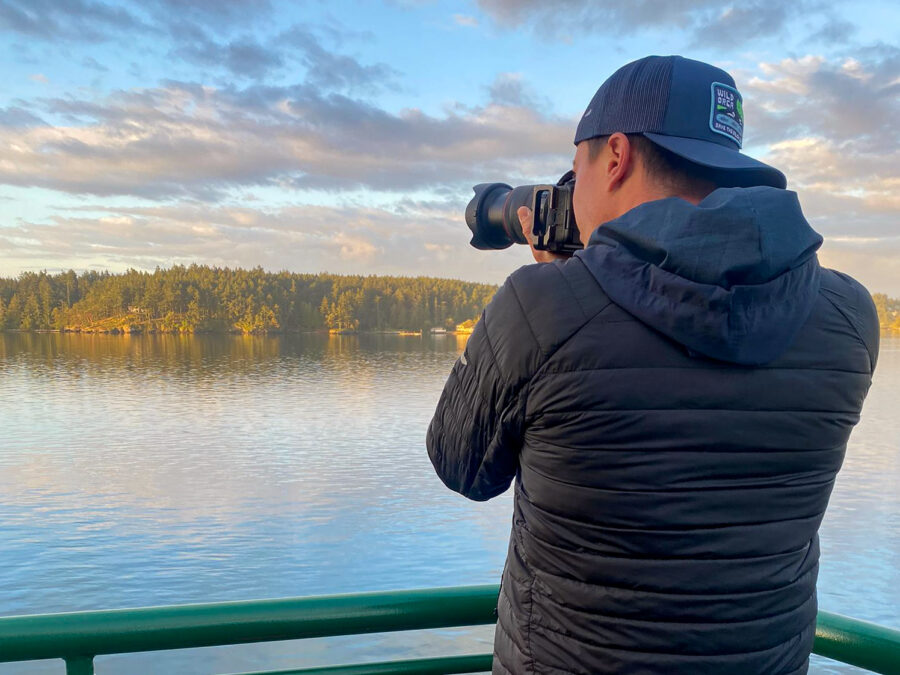
Orcas are constantly moving—even when they sleep. For this reason, having a telephoto lens is so important. I love a good prime lens, but there are too many missed opportunities when photographing wild whales when you are stuck at one focal length. A telephoto lens allows us to capture beautiful images of orcas at a safe distance, giving them space to enjoy their lives.
A fast memory card like a CF card will help with writing speed when you are firing off 12+ frames per second. Marine mammals only come to the surface to breathe or show a quick emotion. During that time, you will fire continuous photos. The worst thing that could happen would be to have your card buffering from a simple porpoise and miss a full breach.
Rain gear to protect your camera is helpful when the seas are rough or when the weather is not cooperating.
Best Camera Settings For Killer Whale Photography
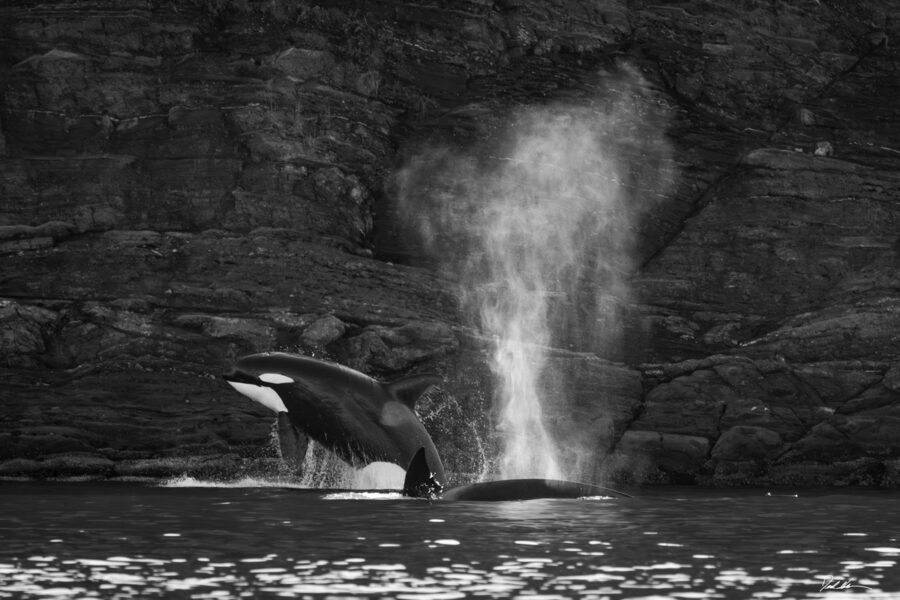
Having your camera dialed into the best possible settings will increase your chances of getting the dream shot you have been waiting for. Every lighting condition is different, as are cameras and personal preferences. After hours and hours of practice, I found these settings to be the most helpful. Start by learning how to shoot in full manual. It really makes a big difference.
Technical Advice
- Shutter speed – On average I set my shutter speed to 1/1000 or faster to make sure the action is frozen. With everything moving I prefer to set my shutter speed to 1/2000sec. but that became challenging in low light conditions so I would boost my ISO to compensate.
- ISO – For most conditions I left my ISO in between 1000 to 4000 rarely going above because of the noise. If the images were too underexposed after I brought my shutter speed near 1/500 and my aperture as open as the lens would allow, then I would exceed 4000 ISO. This purposeful sacrifice of image quality for clarity. We can fix noise to some degree in an image but blurry images are forever.
- Aperture – I left my aperture in most conditions as open as possible. My Canon 100-500mm lens has a maximum aperture of 4.5-7.1 depending on my focal length. Since I was prioritizing shutter speed I wanted as much light to enter my camera as possible. Depth of field was perfect for the look I wanted to achieve giving the animals a sense of place but not creating a busy scene.
- Continuous Drive Mode – We want to capture as many shots as possible while the action is happening. Set your camera on the setting that will allow as many frames per second as possible by holding down the shutter button.
- Single Spot Auto-focus – Single spot AF takes the guessing out of the equation by the camera and puts it into your hands. I found the AF system had a hard time distinguishing where I wanted the focus to be when waves or other objects were present. Single point AF makes sure if you have it on the orca whales they will be in focus and not something else random.
Photographing Orcas Responsibly
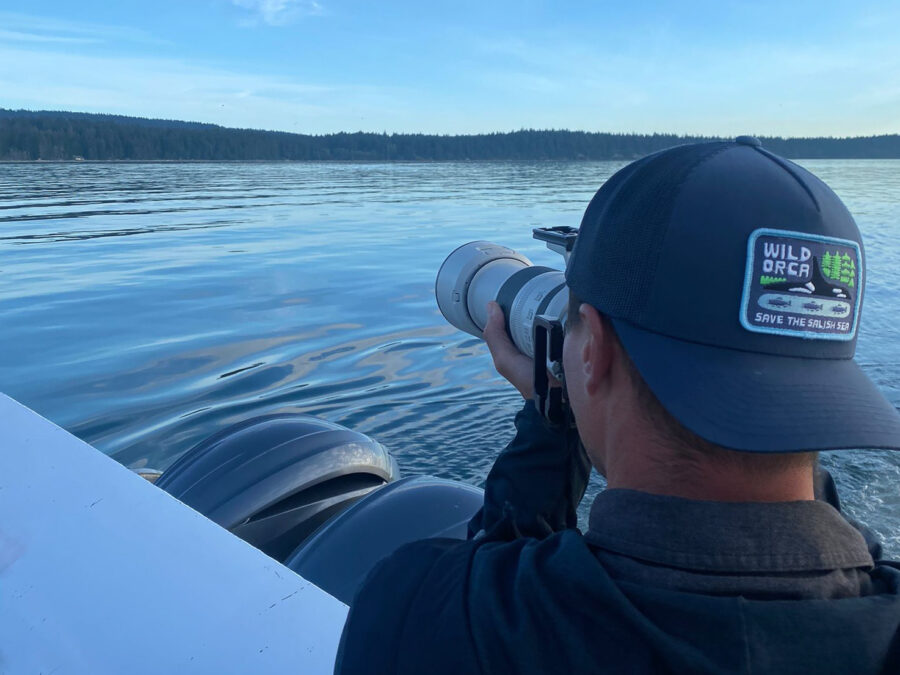
Find a reputable whale-watching tour that respects the safety of the animals first. Read reviews on the companies. Usually, if someone has a bad reputation for harassing the whales, the internet will know about it. One of the largest threats to orca health is boat traffic. Yes, if you get in a boat to see whales, you are adding to the noise; however, there are ways to do so responsibly. Maya’s Legacy Whale Watching out of Friday Harbor in the San Juan Islands prioritizes conservation and education in their orca tours and with all orca encounters in the wild.
Speak up! If your tour operator is not adhering to the guidelines for responsible whale watching, say so on board the vessel and report them afterward. As a professional photographer, I can’t express enough how important ethical wildlife watching is. We have a duty as guests in their homes to behave responsibly and with their best interest at heart.
Best Places To See Orca In The Wild
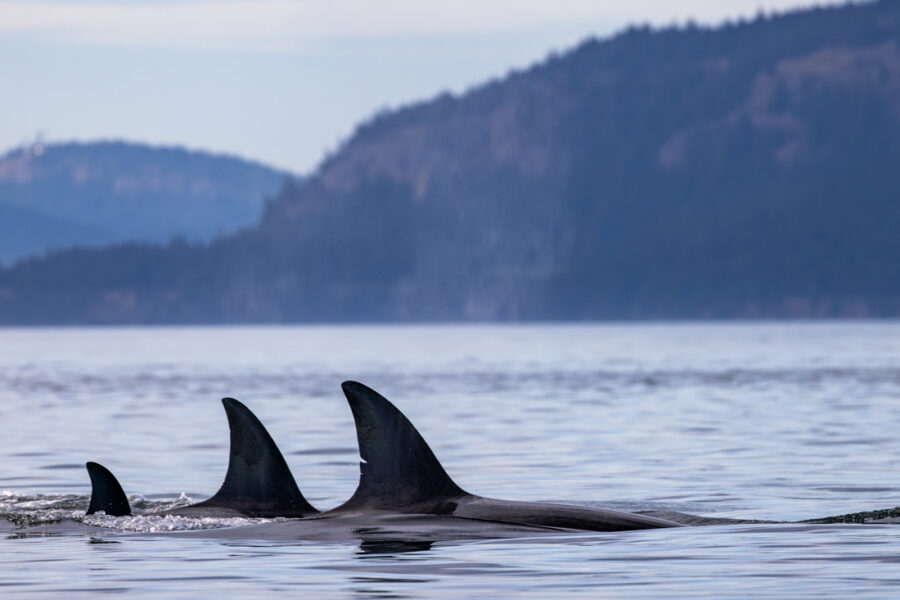
Finding killer whales in the open ocean can be nearly impossible. Go to places where they frequent, like the Pacific Northwest of the United States, Northern Norway, Antarctica, The Valdes Peninsula of Argentina, Hawaii, and the coast of California. Many of these locations have resident populations of killer whales who remain in the general area all year. Research each location for the best time of year to see orcas.
How To Find Killer Whales In The Wild
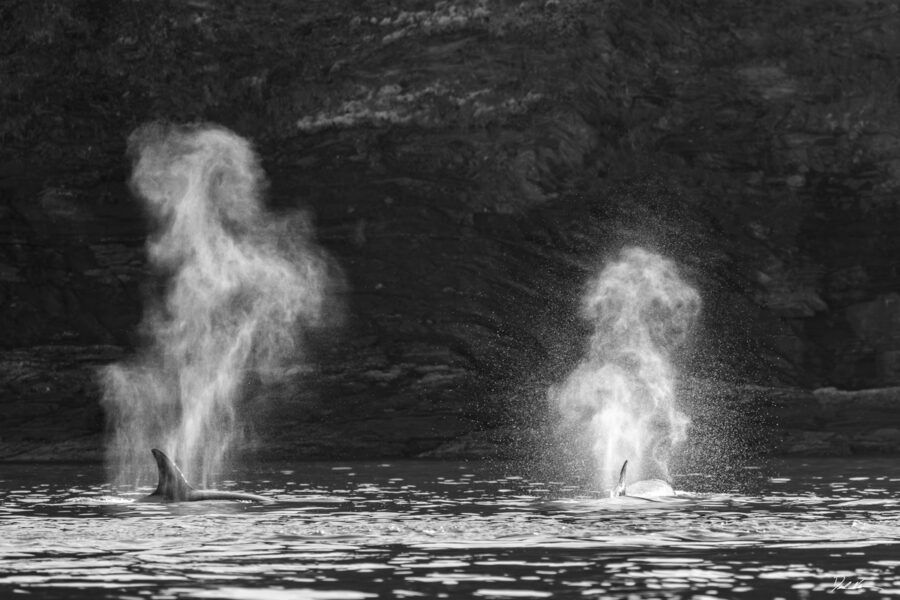
One of the best ways to find killer whales in the wild is to do your research on each location and use local networks to keep you in the loop for any activity. Orca Network is a local Pacific Northwest community group with a Facebook page dedicated to informing the public. They were so helpful to me during my time in the region. While on the water, look for bird activity as to where a potential kill may have happened. Otherwise, keep your eyes scanning the horizon for blows. When orcas come to the surface, they give a large exhale, spouting vapor up in the air dozens of feet. This is the best way to spot orcas in the wild.
What Will You See On A Whale Watching Tour
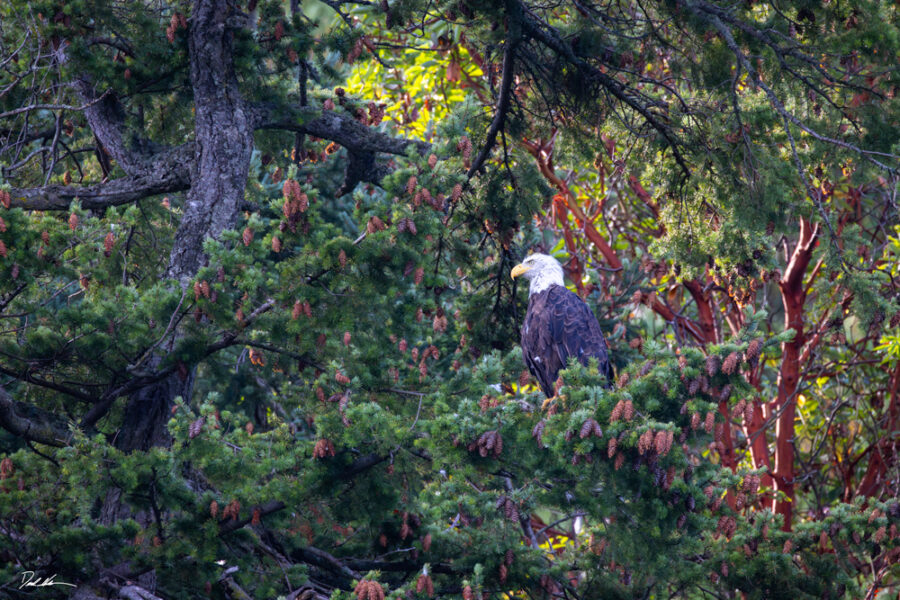
Speaking specifically of whale watching in the Pacific Northwest, you will see some pretty incredible wildlife. The Puget Sound and Salish Sea are full of life, from killer whales to humpback whales to otters and seals. A bald eagle will be seen most of the time out along the shore. Of the two kinds of killer whales in the area, transient killer whales are more common. Each pod is led by a matriarch female killer whale. In killer whale societies, female orcas keep the pods together, forming bonds that will last a lifetime.
Killer Whale Attacks Boat
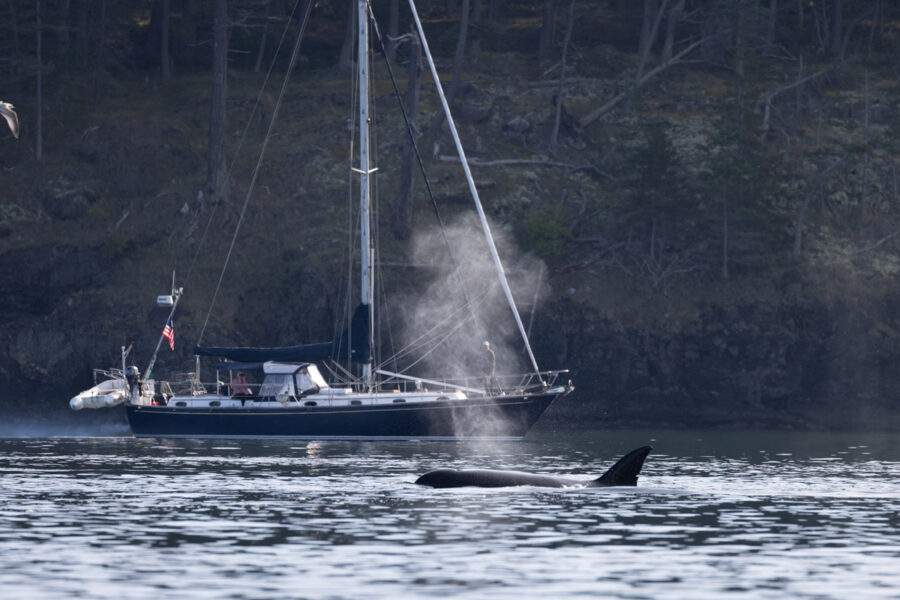
It has been wild to see killer whales sinking boats over the past two years off the coast of Portugal and down along the Straight of Gibraltar. Scientists and researchers have yet to determine why these killer whales are targeting boats and sinking them, but one theory is that they may just be for entertainment. Killer whales are highly intelligent social marine mammals they may just be playing with the boats. When a multi-ton animal rams a small sailboat, the results could be catastrophic for the boat, even if it was just for fun.
Do Killer Whales Attack Humans?
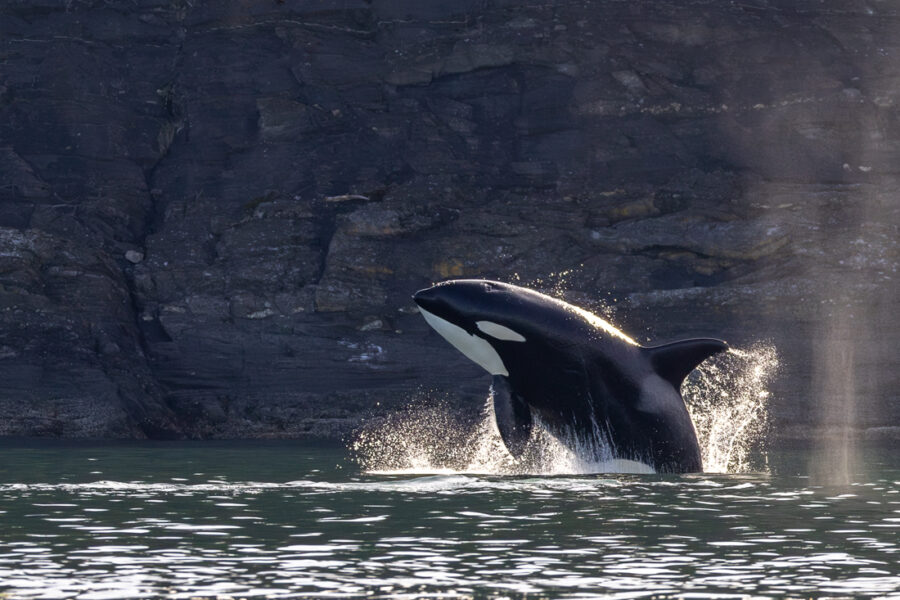
There have never been any reported and verified attacks by killer whales on humans in the wild. However, there have been four fatal attacks on humans while in captivity and several others resulting in non-fatal injuries. In my opinion, these animals should never be in captivity for entertainment or anything else.
Are Killer Whales And Orca The Same Thing?
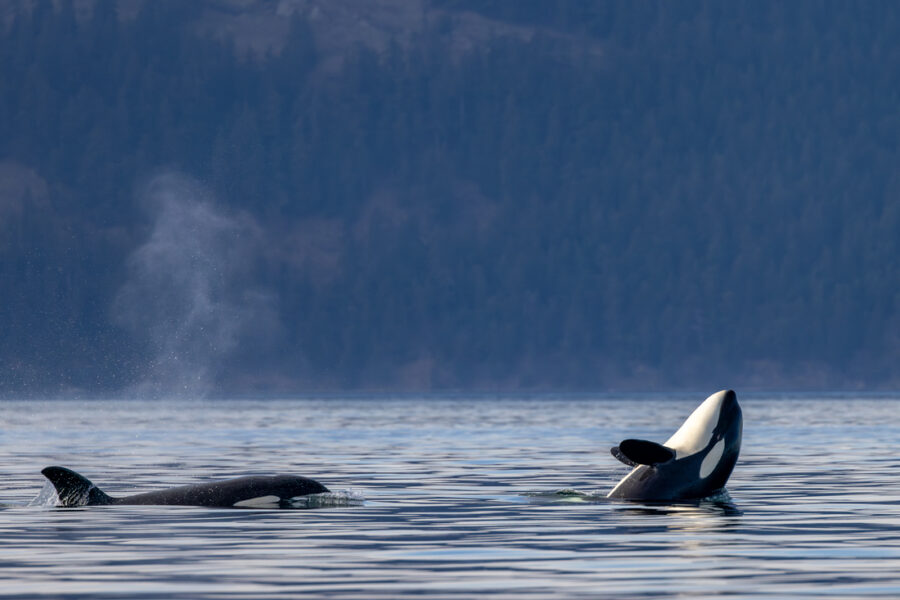
Yes, killer whales and orcas are the same thing. Wild Orca, a conservation research organization, describes them well—Orcinus orca is the Latin scientific name, while killer whale is its common name. Scientists interchangeably use orca and killer whale. Killer whales are actually the largest member of the dolphin family. They are also known as wolves of the sea, assassin whales, and devilfish.
What is the cost of not pursuing your dream and becoming a great photographer?

Learn More
Imagine always wondering what would have happened if you had only invested in yourself and your passions. Think about how quickly life goes. Don’t wait for tomorrow to do the things you have been thinking about doing! Take the trip. Start that business. Invest in yourself. Without photography, I don’t know what my life would look like, but it would be a lot less inspiring. Don’t let another day go by without creating the life you truly want.
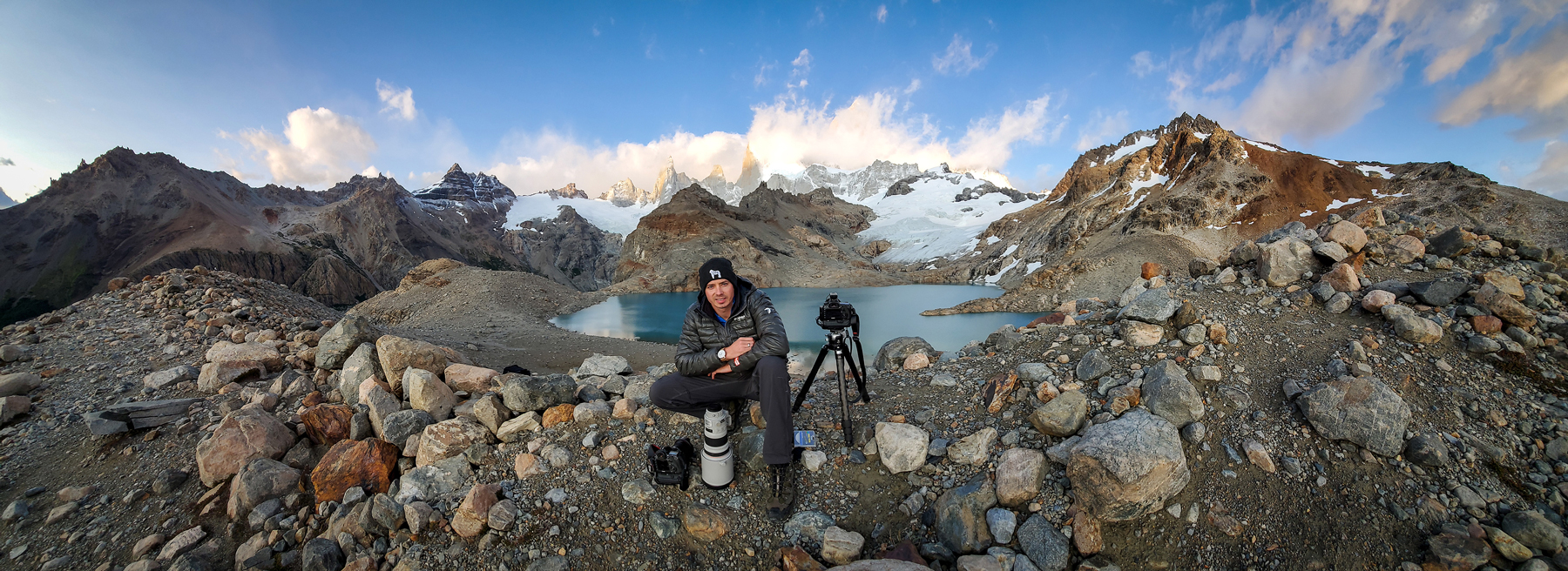
Hello! I'm Derek.
DEREK NIELSEN PHOTOGRAPHY RAISES AWARENESS ABOUT THE GLOBAL NEED FOR CONSERVATION THROUGH PHOTOGRAPHY AND DONATES UP TO 15% OF ALL SALES BACK TO ENVIRONMENTAL ORGANIZATIONS AROUND THE WORLD.
